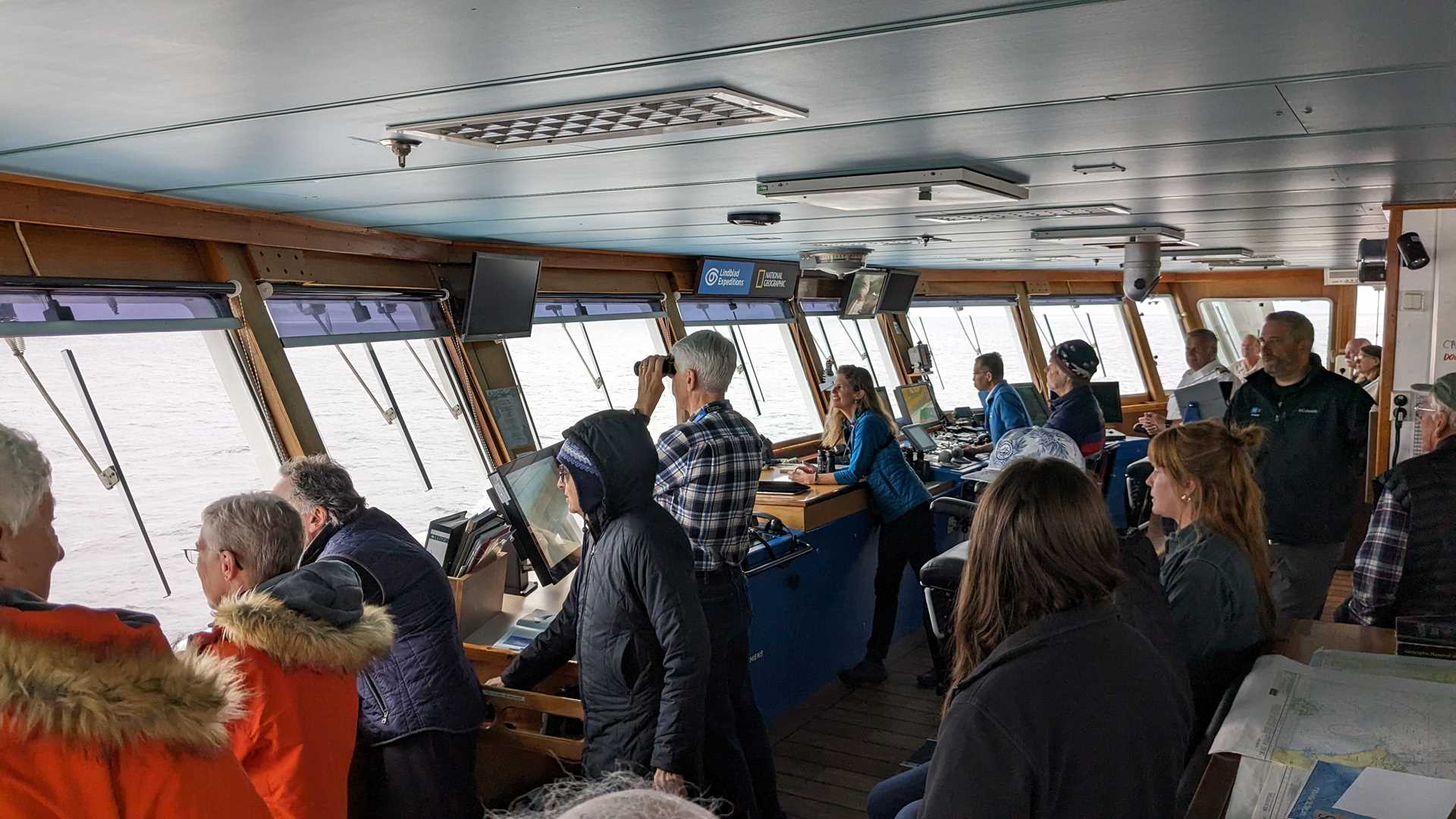We headed into the infamous Drake Passage last night after five days in Antarctica, so today's slightly later wakeup call and breakfast were a welcomed change of pace. A day at sea, however, does not mean fewer opportunities for wildlife spotting! Large numbers of seabirds flew all around the ship, such as southern giant petrels, Antarctic prions, and Cape petrels. We observed several light-mantled albatrosses, considered by some to be the most beautiful of that spectacular family of birds. In the early afternoon, several of the less commonly seen Antarctic petrels joined the fray, distinguishable from the artistically patterned Cape petrels (known also by their Spanish name 'pintado,' meaning painted) by their more orderly black and white plumage.
While sea days spent heading back north from Antarctica provide time for reflection and processing of our experiences over the last few days, the lecture and enrichment program also continues. In the morning, Undersea Specialist Emmett Clarkin spoke about the ocean currents that keep Antarctica cold and insulate it from the rest of the planet, while Naturalist Elise Lockton gave a long-anticipated account of Sir Ernest Shackleton's famous Imperial Transantarctic Expedition. Finally, Naturalist Maria Intxaustegi presented some of her experiences working as a marine archaeologist.
After a hearty dinner of Japanese okonomiyaki, we gathered once more in the lounge for a showing of the documentary Around Cape Horn, in which Captain Irving Johnson recalls his time sailing aboard the bark Peking from Europe around Cape Horn to Santiago. This film puts the historic significance of our spectacular ocean crossing into fitting perspective, especially as we hope to catch a glimpse of the famous lighthouse and monument at Cape Horn tomorrow morning.







